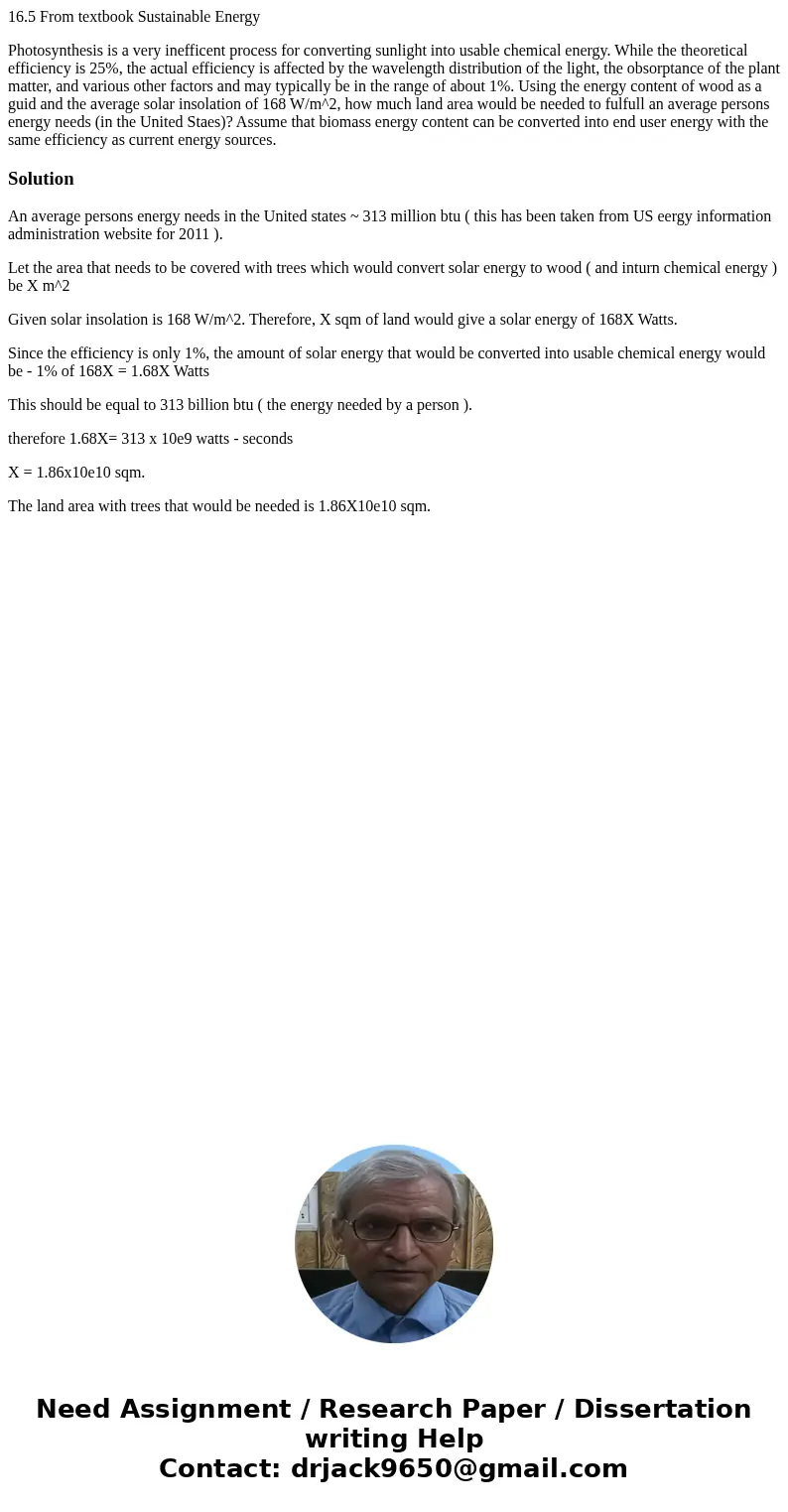165 From textbook Sustainable Energy Photosynthesis is a ver
16.5 From textbook Sustainable Energy
Photosynthesis is a very inefficent process for converting sunlight into usable chemical energy. While the theoretical efficiency is 25%, the actual efficiency is affected by the wavelength distribution of the light, the obsorptance of the plant matter, and various other factors and may typically be in the range of about 1%. Using the energy content of wood as a guid and the average solar insolation of 168 W/m^2, how much land area would be needed to fulfull an average persons energy needs (in the United Staes)? Assume that biomass energy content can be converted into end user energy with the same efficiency as current energy sources.
Solution
An average persons energy needs in the United states ~ 313 million btu ( this has been taken from US eergy information administration website for 2011 ).
Let the area that needs to be covered with trees which would convert solar energy to wood ( and inturn chemical energy ) be X m^2
Given solar insolation is 168 W/m^2. Therefore, X sqm of land would give a solar energy of 168X Watts.
Since the efficiency is only 1%, the amount of solar energy that would be converted into usable chemical energy would be - 1% of 168X = 1.68X Watts
This should be equal to 313 billion btu ( the energy needed by a person ).
therefore 1.68X= 313 x 10e9 watts - seconds
X = 1.86x10e10 sqm.
The land area with trees that would be needed is 1.86X10e10 sqm.

 Homework Sourse
Homework Sourse